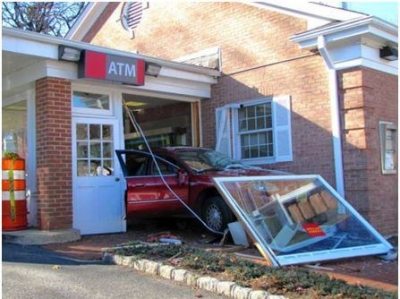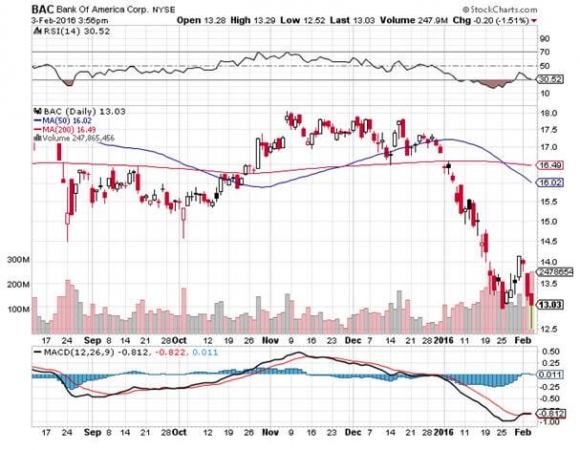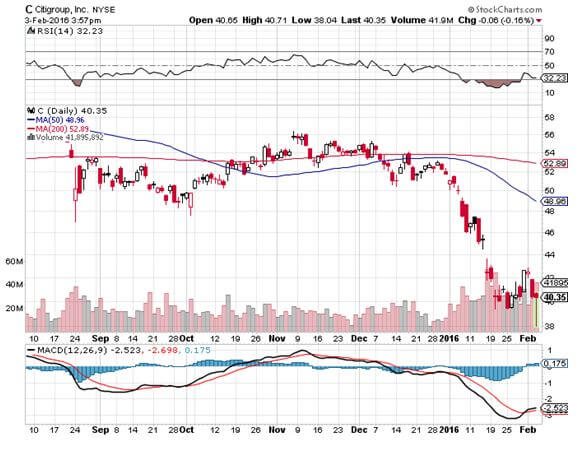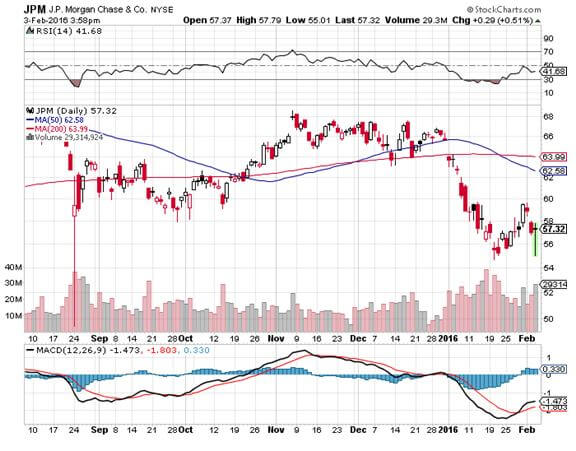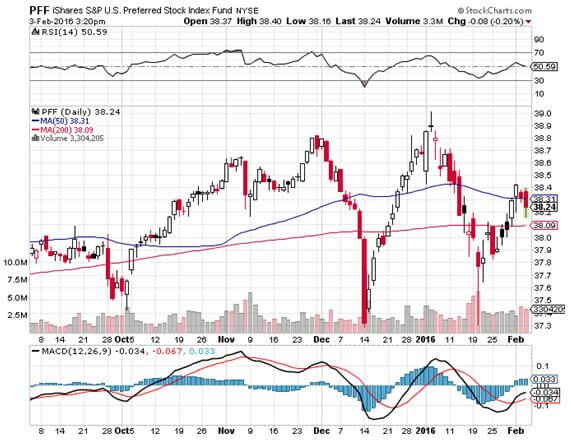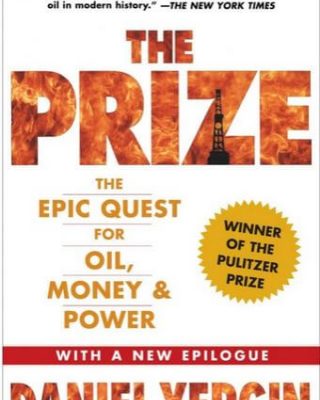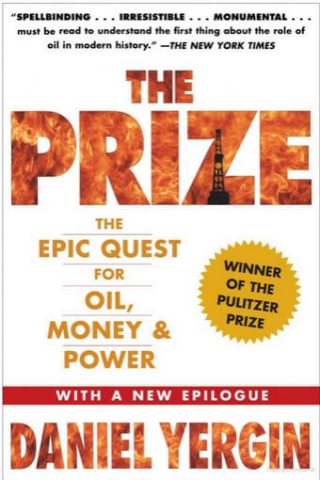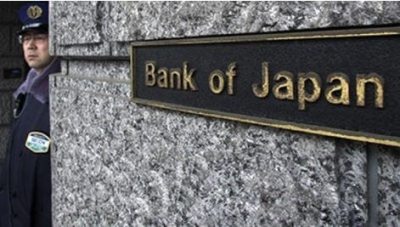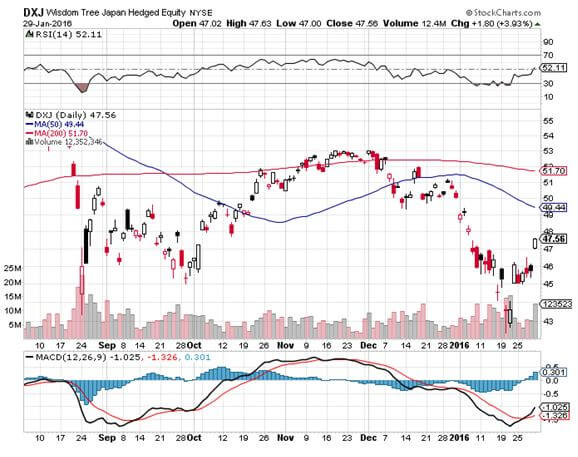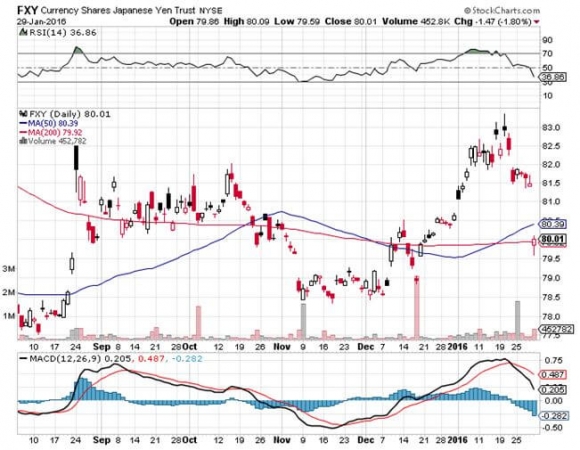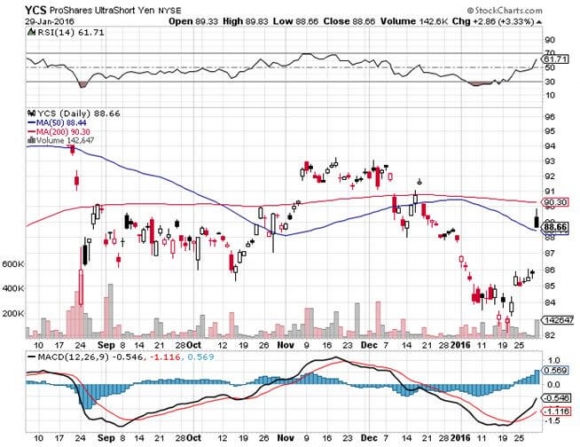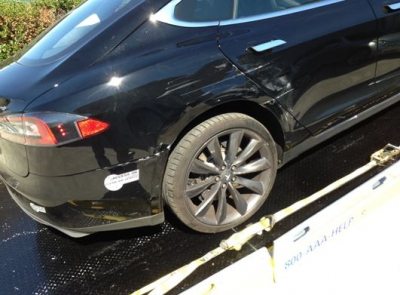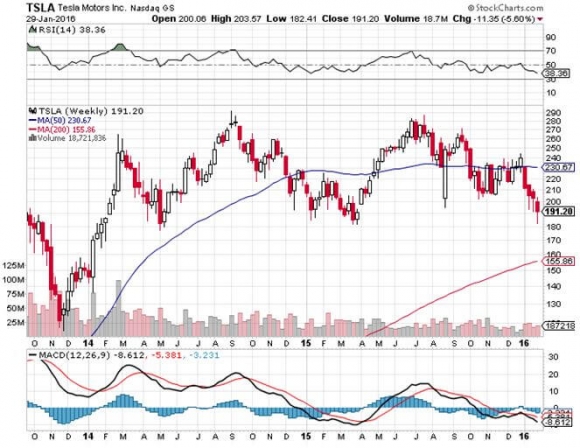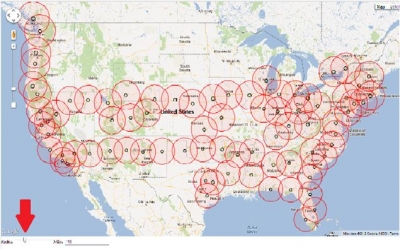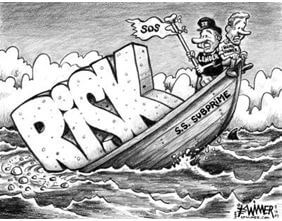
There is no better sight to a hungry trader than blood in the water.
?Buy them when they?re cryin? is an excellent investment strategy that always seems to work.
There are rivers of tears being shed over the banking industry right now.
Federal Reserve officials openly told investors that after the December ?% rate hike that they would continue to do so on a quarterly basis. Only weeks later, a collapse in the stock market shattered this scenario to smithereens.
I doubt we?ll see any more Fed action in 2016.
This caught investors in bank shares wrong footed in a major way.
But wait! It gets worse!
Among the largest holders of American bank shares are the Persian Gulf sovereign wealth funds, including those for Saudi Arabia, Kuwait, Oman, Qatar, and the United Arab Emirates, my old stomping grounds. Pieces of me are still there.
The collapse in oil prices (USO) has put their budgets in tatters and they now have to sell stock to fund wildly generous social service programs. The farther Texas tea drops, the more shares they have to sell, and at $26 a barrel they have to sell bucket loads.
Had enough? There?s more.
The junk bond market (JNK) and oil company shares are suggesting that up to half of all American oil companies will go bankrupt sometime this year, mostly small ones. It all depends on how long oil stays under $40.
Unfortunately, the oil industry has been the most prolific borrower from banks for the last decade. The covenants on many of these loans require borrowers to pump and sell oil to meet interest payments NO MATTER THE PRICE! It?s a perfect formula for maxing out production and selling into a hole.
So fear of widespread energy defaults has also been dragging down bank shares as well.
Some of the moves so far in this short year have been absolutely eye popping. Bank of America (BAC) has plunged 31% from its recent high, while Citibank (C) is down 32% and JP Morgan is off 19%. Basically, they all had a terrible year just in the month of January.
Bank shares have been beaten so mercilessly that they are approaching levels last seen at the nadir of the 2009 financial crisis.
Except that this time, there is no financial crisis, not even the hint of one. For the past seven years, banks have been relentlessly raising capital, reducing leverage, and growing BIGGER.
They proved last time that they were too big to fail. Now they are REALLY too big to fail. Default rates aren?t even a fraction of what we saw during the bad old days. Energy industry borrowing is only a tenth the size of bank home loan portfolios going into the crisis.
Blame the Dodd-Frank financial regulation bill, which requires banks to hold far more capital In US Treasury bonds (TLT) than in the past, which by the way, are doing spectacularly well.
Blame ultra cautious management.
Whatever the reason, Big US banks are now solid as the Rock of Gibraltar.
Which means I?m starting to get interested. Interest rates don?t go down forever, nor does the price of oil. And scares about loan defaults are being wildly exaggerated by the media, as always.
But there is more than one way to skin a cat.
All of these companies issue high yield preferred stock with exceptionally high dividends. For example, Bank of America issued 6.2% yielding paper as recently as October. It is paying something like 8% now.
Since these securities are stock, you get to participate in price appreciation when the panic subsides. A guaranteed 8% return, plus the prospect of substantial capital appreciation? Sounds like a pretty good deal to me.
Google bank preferred shares and you will find an entire world out there of specialist advisors, dedicated newsletters and even day trading and hedging recommendations.
One thing to keep in mind here is that you should only buy ?non callable? paper. This prevents issuers from stealing your paper when better times return to cut their interest payouts.
There is another way to play this beleaguered sector.
You can buy the iShares S&P US Preferred Stock Index Fund ETF (PFF), which owns a basket of preferred stocks almost entirely made up of bank shares. As of today it was yielding 5.62%. To visit the fund?s website, please click link: https://www.ishares.com/us/products/239826/ishares-us-preferred-stock-etf.
 Time to BUY?
Time to BUY?
Global Market Comments
February 3, 2016
Fiat Lux
Featured Trade:
(WATCH OUT FOR THE HEAD AND SHOULDERS),
(SPY), (TLT), (GLD), (SLV),
(THE SERVICE JOB IN YOUR FUTURE), (MCD)?
SPDR S&P 500 ETF (SPY)
iShares 20+ Year Treasury Bond (TLT)
SPDR Gold Shares (GLD)
iShares Silver Trust (SLV)
McDonald's Corp. (MCD)
Global Market Comments
February 2, 2016
Fiat Lux
Featured Trade:
(FEBRUARY 3 GLOBAL STRATEGY WEBINAR),
(MORE PAIN TO COME IN OIL)
(USO), (XOM), (OXY), (COP), (DAL)
(TESTIMONIAL)
United States Oil (USO)
Exxon Mobil Corporation (XOM)
Occidental Petroleum Corporation (OXY)
ConocoPhillips (COP)
Delta Air Lines, Inc. (DAL)
There are very few people I will drop everything to listen to.
One of the handful is Daniel Yergin, the bookish founder and CEO of Cambridge Energy Research Associates, the must-go-to source for all things energy.
Daniel received a Pulitzer Prize for The Prize: The Epic Quest for Oil, Money, and Power, a rare feat for a non-fiction book (I?ve never been able to get one).
Suffice it to say that every professional in the oil industry, and not a few hedge fund traders, have devoured this riveting book and based their investment decisions upon it.
Yergin thinks that the fracking and horizontal drilling revolutions have made the United States the new swing producer of oil. There is so much money in the investment pipeline that American oil production will continue to increase for the next six months, by some 500,000 barrels a day.
Much of this oil is coming from heavily leveraged, thinly capitalized producers whose bankers won?t let them cut back a drop on production so they can maintain interest payments on their debt.
This new supply will run head on into the seasonal drop in demand for energy, when spring ritually reduces heating bills, but the need for air-conditioning has not yet kicked in.
The net net could be a further drop in the price for Texas tea from the present $31 a barrel, possibly a dramatic one into the teens.
Yergin isn?t predicting any specific oil price as a potential floor, as it is an impossible task. While OPEC was a monolithic cartel, the US fracking industry is made up of thousands of mom and pop operators, and no one knows what anyone else is doing.
However, he is willing to bet that the price of oil will be higher in a year.
Currently, the 96 million barrel global market for oil is oversupplied with 2 million barrels a day.
If the International Monetary Fund is right, and the world adds 3.0% in economic growth this year, we will soak up 1 million b/d of that with new demand.
In the end, the oil price collapse is a self-solving problem. The new economic growth engendered by ultra low fuel prices eventually drives prices higher.
Where we reach the tipping point, and the oil market comes back into balance, is anyone?s guess. But when it does, prices will go substantially higher. The cure for low prices is low prices.
This is why I listed energy as the top performing asset class this year (click here for my ?2016 Annual Asset Class Review? by clicking here.
The bottom line is that there will be a great time to buy oil companies, but it is not yet.
What we are witnessing now is the worst energy crash since the 1980?s, when new supplies from the North Sea, Mexico and Alaska all hit at the same time.
I remember the last time oil plunged to $8 a barrel, because Morgan Stanley then set up a private partnership that bought commercial real estate in Houston for ten cents on the dollar. The eventual return on this fund was over 1,000%.
This time it is more complicated. Prices lived over $100 for so long that it sucked in an unprecedented amount of capital into new drilling, some $100 billion worth.
As a result, sources were brought online from parts of the world as diverse as Russia, the Arctic, Central Asia, Africa, the Canadian tar sands and remote and very expensive offshore platforms.
Yergin believes that Saudi Arabia can survive for three years with prices at current levels. After that, it will burn through its $150 billion of foreign exchange reserves, and could face a crisis.
Clearly, the Kingdom is betting that prices will recover with its market share based strategy before then. They are playing for the long haul.
The transition of power to the new King Salman was engineered by a committee of senior family members, and has been very orderly.
However, King Salman, a Sunni, will have his hands full. The current takeover of Yemen by a hostile Shiite minority, the Houthis, is a major concern. Yemen shares a 1,100 mile border with Saudi Arabia.
Daniel says that a year ago, there was a lot of geopolitical risk priced into oil, with multiple crises in the Ukraine, Syria, Libya and Iraq frightening consumers, so trading levitated over $100 for years. Delta Airlines, Inc. (DAL) even went to the length of buying its own refiner to keep fuel prices from rising further.
US oil producers have a unique advantage over competitors in that they can cut costs faster than any other competitors in the world. On the other hand, they are eventually going head to head against the Saudis, whose average cost of production is a mere $5/barrel.
A native of my own hometown of Los Angeles, Yergin started his professional career as a lecturer at Harvard University. He founded Cambridge Energy in 1982 with a $7.00 investment in a file cabinet at the Good Will. He later sold Cambridge Energy to the consulting group IHS Inc. for a small fortune.
To buy The Prize at discount Amazon pricing, please click here.
Global Market Comments
February 1, 2016
Fiat Lux
Featured Trade:
(BANK OF JAPAN BOMBSHELL BOOSTS MARKETS),
(FXY), (YCS), (DXJ), (UUP), (SPY), (TLT), (GLD), (USO),
(CRASH TESTING THE TESLA), (TSLA)
CurrencyShares Japanese Yen ETF (FXY)
ProShares UltraShort Yen (YCS)
WisdomTree Japan Hedged Equity ETF (DXJ)
PowerShares DB US Dollar Bullish ETF (UUP)
SPDR S&P 500 ETF (SPY)
iShares 20+ Year Treasury Bond (TLT)
SPDR Gold Shares (GLD)
United States Oil (USO)
Tesla Motors, Inc. (TSLA)
I was just about to don my backpack and head out for my evening hike when I caught a phone call from Tokyo.
The Bank of Japan had just announced they were implementing negative interest rates for the first time in history. The Japanese yen (FXE), (YCS) was in free fall and the stock market (DXJ) was soaring.
Note to self: don?t ever answer the phone just as I?m heading out the door. Good-bye hike, hello another inch on my waistline.
However, bank stocks were getting destroyed, as they would now have to pay money to the central bank to accept deposits, as they already do in Europe and Switzerland.
The overnight trading in S&P 500 (SPY) futures jumped from unchanged to up 100 points. It looked like January was going to go out with a bang. This could be the mother of all month end window dressings.
It really was a day for moves that made no sense. Bonds (TLT) rose with stocks on the hopes that any Fed interest rate hikes for this year will be cancelled. That?s like dogs and cats laying together.
Gold (GLD) rose modestly, even though the prospect of more quantitative easing anywhere in the world should have caused it to crater.
The US dollar was robust (UUP), just when you?d think that lower for longer interest rates should weaken it. I guess it?s a case of being the best house in a bad neighborhood.
Oil (USO), the main driver of all process for the past six months, was strangely unchanged for a change.
It was really one of those days when you wanted to hurl your empty beer cans at the TV, throw up your hands, and cry.
Personally, I don?t think US risk markets are out of the woods yet. We can?t escape the reality that earning multiples for American companies are falling.
You have to ask the question of what do negative interest rates really mean for the global economy? Hint: none of the answers are good.
Blame it on a Fed tightening cycle, which has just been shifted from second gear back to first. Blame it on a decade long GDP growth rate, which is stuck at 2%. That is caused by demographic headwinds that we can do nothing about.
Whatever the reason, stocks are not headed straight up from here. I think we are just squeezing out the shorts for the umpteenth time. They could all be cleaned out by the time the (SPY) hits $195.
Then it will be back to the low end of our new, violent range, probably just above $182.
 Surprise!
Surprise!
The Tesla Model S1 (TSLA) has been rated by Consumer Reports magazine as the best car ever built, grabbing a covered 100 score out of 100. They called the vehicle ?perfect.?
It has been ranked by the US government Department of Transportation as the safest car ever built. Even competitors love the car.
So I decided to see if these vaunted claims were true and crash test my own $110,000 high performance Model S1 on public streets.
Actually, it wasn?t I who made the decision. It was the harried housewife with four screaming kids in the back seat speaking on a cell phone while driving who made that call.
She drove her GMC Silverado quad cab pickup truck straight into the side of my Tesla.
All I heard was a loud horn and a big slam as my car spun around 360 degrees. It was like going through aerobatic pilot school all over again.
I jumped out and asked if everyone was alright. They were.
All I found were four deadly silent boys and a woman crying over the phone to her husband about how his brand new truck had just gotten a small dent on the front bumper.
I inspected the barely visible damage, took pictures (see below), and calculated that her repairs would run about $1,500.
Bottom line on the safety issue? I didn?t even know that I had been in an accident. The vehicle is essentially a giant crumple zone. But it comes at a high price.
All four ultra thin racing tires tore off the wheels during the spin (expensive). That meant the custom painted 21-inch wheels had to scrape along the pavement, destroying them (more expensive). After teaching the AAA tow truck guy how to drive it, he hauled it away.
It was then that I learned about the arcane world of fixing Tesla?s.
Since the car is made out of aluminum, no neighborhood body shop can work on them, as it melts at a much lower temperature than steel. Standard welders are not allowed.
There are in fact only three specialized niche repair shops in the entire San Francisco Bay Area that can work with this ultra lightweight metal.
Brooks Auto Body of Oakland is one of them.
When I stopped by to talk about the job, the owner, a 6 foot 6 inch Korean guy, was in too much of a good mood. I would find out why later. Behind him were 16 other Tesla?s in varying states of disassembly.
News flash: These things are not cars. They are more like giant computers, with an 18-inch screen and a 1,200-pound battery. None of the components looked anything like car parts. Only the wheels belied any connection with transportation.
It took two months to finish the repairs. Since Tesla would only sign off on the car when it was perfect, it was sent back to the factory in Fremont three times for additional realignment and recalibration.
The final bill came to $32,000. The good news is that my lithium ion battery was fine, which would have cost an extra $30,000 to replace.
The really humiliating thing about the entire experience was that I had to drive a KIA Optima loaner until the Tesla was back in action. So for eight weeks, my life was dull, mean, and brutish.
Driving on the freeway, every nut and bolt made its presence felt. Wherever I went I left a trail of parts. And I had to buy gas at those ugly places that sell cigarettes, chewing tobacco, and condoms! Yuck! Once you?ve had electric, you never go back.
All of which brings me to Tesla?s share price, which has just taken a swan dive from $295 to $182 as hot money fled the big momentum names this year.
Let me tell you that the revolutionary vehicle is still wildly misunderstood, and the company has done a lousy job making its case. I guess you can afford that luxury when consumers line up for a year to buy your product.
The electric power source is, in fact, the least important aspect of the car. Here are 15 reasons that are more important:
1) The vehicle has 75% fewer parts than any other, massively reducing production costs. The drive train has 11 parts, compared to over 1,500 for conventional gasoline powered transportation. Tour the factory and it is eerily silent. There are almost no people, just a handful who service the German robots that put these things together.
2) No maintenance is required, as any engineer will tell you about electric motors. You just rotate the tires every 6,000 miles.
3) This means that no dealer network is required. There is nothing to fix.
4) If you do need to repair something, usually it can be done over the phone. Rebooting the computer addresses most issues. If not, they will send a van to do an onsite repair for free.
5) The car runs at room temperature, not the 500 degrees in standard internal combustion cars. This means that the parts last forever.
6) The car is connected to the Internet 24/7. Once a month it upgrades its own software when you are sleeping. You jump in the car the next morning and a message appears on your screen saying, ?We just upgraded the following 20 Apps.? This is the first car I ever owned that improved itself with age, as I do myself.
7) This is how most of the recalls have been done as well, over the Internet while you are sleeping.
8) If you need to recharge at a public station, it is free. Tesla has its own national network of superchargers that will top you up in 45 minutes, and allow you to drive across the country. (I can?t wait to try out the one in Winnemucca, Nevada on my trip to Chicago). But hotels and businesses have figured out that electric car drivers are the kind of big spending customers they want to attract. So public stations have been multiplying like rabbits. When I first started driving my Nissan Leaf in 2010 there were only 25 charging stations in the Bay Area. There are now over 1,000. They even have them at Costco.
9) No engine means a lot more space for other things, like storage. You get two trunks, a generous one behind, and a ?frunk? in front.
10) Drive an electric car and you can drive in the HOV commuter lanes as a single driver. This won?t last forever, but it?s a nice perk now. In California you are treated as visiting royalty.
11) There is a large and growing market for all American made products. Tesla has by far the highest percentage of US parts (100%) than any of the big three.
12) Since almost every part is made on site at the Fremont factory, supply line disruptions are eliminated. Most American cars are over dependent on Asian supply lines for parts and frequently fall victim to disruptions, like the Fukushima nuclear disaster.
13) There are almost no controls, providing for more cost savings. Except for the drive train, windows, and turn signals, all vehicle controls are on the touch screen, like a giant iPhone 5s.
14) A number of readers have argued that the Tesla really runs on coal, as this is still the source of 36% of the US power supply. However, if you program the car between midnight and 7:00 AM (one of my ideas that Tesla adopted in a recent upgrade), you are using electricity generated by the utilities to maintain grid integrity at night that otherwise goes unused and wasted. How much power is wasted like this in the US every night? Enough to recharge 150 million cars per night. As for me, I can recharge my car directly from solar panels.
15) Oh yes, the car is good for the environment, a big political issue for at least half the country.
No machine made by humans is perfect. So in the interest of full disclosure, here are a few things Tesla did not tell you before you bought the car.
1) There is no spare tire or jack, just an instant repair kit in a can.
2) The car weighs a staggering 3 tons, so conventional jacks don?t work. Lithium is heavy
stuff.
3) The car is only 8 inches off the ground, so only a scissor jack works.
4) The 21-inch tires on the high performance model are a special order. Get a blowout in the middle of nowhere and you could get stranded for days. So if you plan to drive to remote places, Like Lake Tahoe, as I do, better carry a 19-inch spare in the ?frunk? to get you back home.
5) If you let some dummy out in the boonies jack the car up the wrong way, he might puncture the battery and set it on fire. It will be a decade before many mechanics learn how to work with this advanced technology. The solution here is to put a hockey puck between the car and the jack. And good luck explaining what this is to a Californian.
6) With my Leaf, I always carried a 100-foot extension cord in the trunk. If power got low, I just stopped for lunch at the nearest sushi shop and plugged in for a charge. Not so with Tesla. You are limited to using their own proprietary 20-foot charging cable, or it won?t work.
The investment play here is not with the current Model S1, which is really just a test bed for the company to learn how to execute real mass production.
This is why the current price/earnings multiple is meaningless. Battery technologies are advancing so fast now, that range/weights are doubling every four years.
That means that in 2018 you should be able to buy the new Tesla 3 for $35,000 that gets 300 miles per charge and requires no fuel or maintenance for the life of the vehicle. That will be the same as paying $18,000 for a conventional gasoline powered model on a lifetime all in cost basis.
And guess what? Detroit is so far behind developing this technology that they will never catch up. My guess is that they eventually buy batteries and drive trains from Tesla on a licensed basis, as Toyota (for the RAV4) and Daimler Benz (for the A Class) already are.
All of Detroit?s existing hybrid technologies are older versions similarly purchased from the Japanese (bet you didn?t know that).
That leaves the global car market to Tesla for the taking. Sales in China started at a price 50% higher than here in the US, and the early indications are that they will be an absolute blowout. Government support there is no surprise, given that the air pollution in Beijing is so thick you can cut it with a knife.
This is when Tesla?s production rockets from the current 50,000 annual units to over 500,000 and takes over the world. That will boost the shares from the present $182 to over $500.
I would say $1,000 a share, but I don?t want to give it the Apple (AAPL) curse. So if you can use the current weakness to buy it under $160, you will be well rewarded.
You might also go out and buy a Model S1 for yourself as well. It?s like driving a street legal Formula 1 racecar and is a total blast. Just watch out for drivers of Silverado?s speaking on cell phones.
 Tesla?s Free Supercharger Network
Tesla?s Free Supercharger Network
 Not Much of a Wait at the Vacaville Supercharger
Not Much of a Wait at the Vacaville Supercharger
 $1,500 Worth of Damage
$1,500 Worth of Damage
 $32,000 Worth of Damage
$32,000 Worth of Damage
 But the Motor Was Fine
But the Motor Was Fine
?Wall Street subprimed commodities,? said Brian Reynolds, chief market strategist of Rosenblatt Securities, of the oil price crash.
Global Market Comments
January 29, 2016
Fiat Lux
Featured Trade:
(FEBRUARY 3 GLOBAL STRATEGY WEBINAR),
(WHY YOUR OTHER INVESTMENT NEWSLETTER IS SO DANGEROUS),
(ANOTHER NAIL IN THE NUCLEAR COFFIN),
(NLR), (CCJ)
Market Vectors Uranium+Nuclear Engy ETF (NLR)
Cameco Corporation (CCJ)

